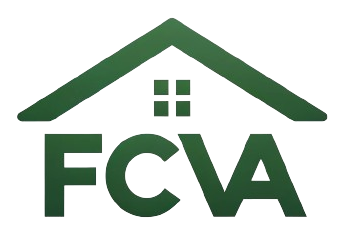How to Sell a Home You Don’t Live In: 10 Steps That Work
Are you considering selling a home you no longer reside in? This situation can feel overwhelming, especially if you’re feeling uncertain about how to navigate the selling process. But don’t worry—you’re not alone. Many people find themselves in similar situations, whether due to relocations, inherited properties, or simply an investment gone awry. The good news is that selling a home you don’t live in can be streamlined and stress-free, especially if you follow these ten actionable steps.
1. Understand Your Reasons for Selling
Before diving into the selling process, take a moment to evaluate your motivations. Are you looking to liquidate an investment, move closer to family, or perhaps you’ve inherited a property that you cannot maintain? Knowing your reasons will give you clarity and help guide your decisions throughout the process.
2. Assess Your Property’s Condition
Even though you don’t live in the home, it’s essential to realistically assess its condition. Take the time to walk through the property or hire a professional to perform a thorough inspection. Identify any necessary repairs or updates that could make your home more appealing to buyers. You might be surprised by the impact of small changes!
| Condition Factor | Outcome | Potential Action |
|---|---|---|
| Roof age and condition | Major expenses if leaks occur | Repair or replace as needed |
| Plumbing issues | May deter buyers | Fix leaks or issues |
| Outdated appliances | Lowers property value | Upgrade if budget allows |
3. Gather Important Documents
When selling a home, having the proper paperwork can save you time and headaches later. Collect essential documents such as the title, any existing warranties, and past inspection reports. This documentation will not only help potential buyers feel confident about their purchase but also streamline the closing process.
4. Decide on Your Selling Strategy
How you choose to sell your home makes a significant difference in both the timeline and your potential payout. You can either work with a real estate agent or consider selling the property yourself. Each route has its pros and cons:
| Selling Method | Pros | Cons |
|---|---|---|
| Real Estate Agent | Expertise and networking | Commission fees |
| For Sale by Owner (FSBO) | Keep all profits | More work, less guidance |
Evaluate which option aligns best with your comfort level and situation.
5. Price Your Home Competitively
Setting the right price is crucial in attracting potential buyers. You can research online listings or consult with a local real estate agent for a competitive market analysis. A well-priced home can generate interest quickly, but be cautious not to undervalue your property.
6. Prepare Your Home for Sale
Make the home inviting, even if it’s not your primary residence. A clean and neutral appearance can work wonders. Consider these preparation tips:
- Declutter: Remove personal items and excess furniture. This will help prospective buyers visualize themselves in the space.
- Clean Thoroughly: A spotless home is far more appealing. Consider hiring a cleaning service if the property has been vacant for some time.
- Stage the Home: Professional staging can enhance the appeal of your home. If it’s within your budget, it could lead to a quicker sale.
7. Market Your Property Effectively
Once the home is ready for sale, it’s time to let potential buyers know it’s on the market! This involves creating an enticing listing that showcases your home’s best features.
- High-Quality Photos: Professional photographs can make a significant difference in your listing. People are drawn to appealing visuals, so it pays to invest in a good photographer.
- Online Listings: Utilize real estate websites and social media platforms to advertise your property. Highlight key features that cater to your target buyers.
8. Be Open to Offers and Negotiations
Once your home starts to attract interest, be prepared to receive offers. Depending on the market, you may receive multiple offers, which can be exciting. Keep an open mind and be willing to negotiate.
- Evaluate Each Offer: Consider not just the price but also the buyer’s conditions and desired timelines.
- Respond in a Timely Manner: Quick responses can maintain buyer interest and could lead to a more successful sale.
9. Close the Sale Smoothly
Whether you’ve accepted an offer through an agent or as a private seller, closing the sale is a crucial step. Make sure you understand what’s involved and work with a reliable closing agent or attorney. Created checklists can help ease the process.
| Closing Requirement | Description |
|---|---|
| Title Transfer | Ensure the property title is transferred correctly to the buyer. |
| Settling Closing Costs | Be aware of what fees may apply, including agent commissions and administrative fees. |
10. Move On with Confidence
After the sale is final, take a moment to breathe. Selling a home you don’t live in can be stressful, but trusting the process and following these steps allows a smoother transition. Use the profit wisely—perhaps towards a new home or other investments.
Final Thoughts
Selling a home that you don’t live in doesn’t have to be a daunting task. By following these ten steps, you can navigate the process methodically and efficiently. It’s all about planning, preparation, and having the right resources at your fingertips. Whether you’re dealing with an inherited property, a rental you wish to offload, or any other circumstances, remember you have options at your disposal.
Understanding your motivations, pricing strategically, and marketing effectively can set you up for a successful sale. And as you take each step, keep your future in focus. Soon, you’ll be able to move forward with confidence and clarity. Time to embrace the next chapter!
Ready to sell your house fast in Virginia? FastCashVA makes it simple, fast, and hassle-free.
Get your cash offer now or contact us today to learn how we can help you sell your house as-is for cash!
Disclosure: As an Amazon Associate, I earn from qualifying purchases.



